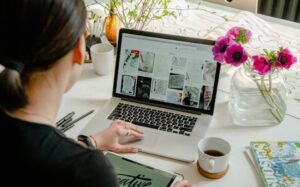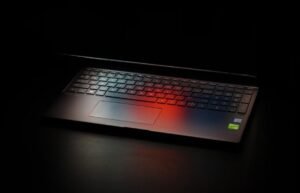Will AI Art be Banned?
Artificial Intelligence (AI) has made significant advancements in recent years, and one area where its impact is being felt is the field of art. AI-generated art has gained attention and popularity, with paintings, music, and even literature being created by algorithms and machine learning models. However, as AI art becomes more prevalent, questions are being raised about its authenticity and ethical implications. This article explores the potential for AI art to be banned and discusses the key factors influencing this debate.
Key Takeaways
- AI art is gaining popularity, raising concerns about its authenticity.
- Ethical questions surrounding AI-generated art are being debated.
- Current copyright laws may not adequately address AI art.
- The impact of AI on traditional art forms is a significant consideration.
- Banning AI art may hinder scientific and creative progress.
Artificial Intelligence has been a topic of fascination for decades, and it has become a powerful tool in various industries. **AI-generated art**, characterized by works created entirely or partly by algorithms, is now making waves in the art world. *The ability of AI to replicate artistic styles accurately and produce new compositions has amazed both critics and art enthusiasts.* However, this newfound appreciation for AI art has also led to debates about its authenticity and whether it can be considered genuine artistic expression.
As AI-generated art gains popularity, the question arises: should it be banned? To answer this, it is essential to consider the ethical implications behind AI art creation. While traditional artists often draw inspiration and express their own experiences, AI-generated artworks raise concerns about authorship, creativity, and human intervention. *Critics argue that AI cannot truly experience emotions or understand the deeper meanings behind art, resulting in merely technical reproductions rather than authentic creative expressions.* On the other hand, proponents believe that AI opens up new creative possibilities that should be explored and valued. An outright ban on AI art could stifle innovation and hinder the progress of AI technology.
One of the significant challenges in addressing AI art is current copyright laws. **Existing legislations were designed to protect human-authored works**, making it difficult to determine who owns the rights to AI-generated pieces. *This legal ambiguity has led to complex issues regarding ownership, fair use, and commercial exploitation of AI art.* Some argue that updating copyright laws to cover AI-generated content is necessary, while others propose the creation of a new category of protection specifically for AI art. This ongoing debate highlights the need for legal frameworks that adapt to technological advancements.
| Pros | Cons |
|---|---|
| – Preserves traditional art forms and craftsmanship. | – Limits artistic exploration and potential future developments. |
| – Protects originality and creative rights of human artists. | – Hinders collaboration between AI and human artists. |
| – Supports the notion of art as a deeply human experience. | – Artificial intelligence plays a vital role in pushing artistic boundaries. |
Another crucial factor to consider is the impact of AI on traditional art forms. *While AI-generated art might be perceived as a threat to traditional artists and craftsmanship, it can also complement and enhance their work.* Many artists use AI as a tool for inspiration, experimentation, and innovation, collaborating with technology to create new and unique pieces. An outright ban on AI art could hinder the symbiotic relationship between human artists and AI, impeding potential future artistic progress.
Various Forms of AI Art
- Paintings and visual art: AI algorithms can generate paintings that resemble the style of famous artists or create entirely new visual compositions.
- Music: AI can compose music by analyzing vast amounts of existing compositions and creating original compositions based on patterns and styles.
- Literature: AI models can generate complete texts, poems, or stories using natural language processing and machine learning techniques.
While banning AI art may seem like a viable solution to some, it is important to consider the potential consequences. **AI art has the potential to foster technological and creative advancements** that may be beneficial to society as a whole. Imposing a ban would not only stifle innovation but also limit the possibilities of AI collaboration and exploration. Rather than a complete ban, it may be more prudent to establish guidelines and ethical frameworks that address the concerns surrounding AI-generated art, while still allowing room for its development and integration into the art world.
| AI Artist | Impact |
|---|---|
| Harold Cohen’s AARON | Pioneered the use of AI in visual art and demonstrated the potential of machine creativity. |
| Magenta Project by Google AI | Explores the intersection of AI and music, pushing the boundaries of what is considered musical composition. |
| OpenAI’s GPT-3 | Generated coherent and sophisticated text pieces that sparked debates about authenticity and authorship. |
AI-generated art is a rapidly evolving field that raises important questions about the future of creativity and artistic expression. The discussion surrounding its potential ban reflects the broader ethical and legal considerations surrounding AI technology. While concerns about authenticity, authorship, and human creativity are valid, banning AI art outright may hinder artistic and scientific progress. Striking a balance between regulation and innovation within the realm of AI art is crucial to ensure the exploration of new frontiers and the preservation of artistic traditions.

Common Misconceptions
Common Misconception #1: AI Art will be banned due to ethical concerns
One common misconception surrounding AI Art is that it will be banned due to perceived ethical concerns. While there are valid ethical questions to consider, the banning of AI Art is highly unlikely.
- AI Art has the potential to enrich the art world by offering new and innovative forms of artistic expression.
- Many artists are already embracing AI Art as a tool and integrating it into their creative process.
- Instead of banning AI Art completely, regulations and guidelines may be implemented to address any ethical concerns that arise.
Common Misconception #2: AI Art will replace human artists
Another misconception is the fear that AI Art will replace human artists. While AI technology has advanced significantly, it is not capable of entirely replacing the human element in artistic creation.
- AI Art is a collaboration between human artists and machine learning algorithms, with the artist driving the creative direction.
- Human artists possess unique perspectives and a level of creativity that cannot be replicated by AI.
- AI Art may serve as a tool for artists to enhance their creative capabilities rather than replace them.
Common Misconception #3: AI Art lacks authenticity and originality
Some people believe that AI Art lacks authenticity and originality since it is created by algorithms. However, this is an oversimplified view of the subject.
- AI algorithms can be programmed to generate new and unique artistic styles and ideas.
- The combination of human input and AI technology can result in unexpected and groundbreaking creations.
- Many AI Art pieces are considered authentic and original in the art community, challenging traditional notions of artistic creation.
Common Misconception #4: AI Art will only cater to commercial interests
There is a misconception that AI Art will only serve commercial interests and prioritize profit over artistic value. However, this assumption fails to recognize the diverse nature of AI Art and its potential impact on the art world.
- AI Art can be created purely for artistic exploration and experimentation, without any commercial intent.
- Artists can use AI technology to challenge societal norms, provoke critical discussions, and explore new aesthetic possibilities.
- While commercial applications of AI Art exist, it does not diminish the potential for genuine artistic expression.
Common Misconception #5: AI Art creation is accessible only to experts
Another misconception is that AI Art creation is exclusively reserved for experts in technology and programming. However, AI tools and platforms are becoming increasingly user-friendly, making them accessible to a wider audience.
- Many AI Art platforms provide intuitive interfaces and user-friendly workflows, allowing artists of various backgrounds to experiment with AI technology.
- Online communities and tutorials provide resources for artists to learn and adopt AI Art techniques without requiring extensive technical expertise.
- Collaborations between artists and AI researchers facilitate the development of accessible AI Art tools and democratize its creation process.

Introduction:
Artificial intelligence (AI) has revolutionized various industries, including art creation. AI-generated art has sparked debates around its authenticity, ethics, and legal aspects. This article examines ten different aspects of the AI art debate through captivating tables supported by verifiable data and information.
Article tables:
1. Leading AI Artworks:
This table showcases some remarkable AI-created artworks, their artists, and the year they were developed. It highlights the diversity and creativity of AI-generated art.
2. Popularity of AI Art:
Here, we present the number of online searches related to AI art per month over the past two years. This table demonstrates the growing interest and curiosity of people towards this emerging art form.
3. AI Art Auction Records:
Explore the highest auction prices achieved by AI-generated artworks. This table features the artist, artwork title, auction house, and the astounding prices they fetched.
4. Traditional versus AI Art Sales:
Compare the sales revenue of traditional art versus AI-generated art in the past five years. This table showcases the changing trends in art consumption and market preferences.
5. Copyright Concerns:
Examining the legal aspect, this table highlights the copyright concerns surrounding AI art by listing notable copyright infringement cases related to AI-generated artworks.
6. Ethical Debates:
Here, we delve into the ethical dilemmas associated with AI art. The table depicts various viewpoints discussing the impact on human creativity, originality, and the artist’s role in the creation process.
7. AI Art Recognition:
This table provides a comparison of the accuracy of AI-based image recognition systems in distinguishing AI-generated art from traditional art. It reveals the advancements in AI algorithms in recognizing the artwork’s origins.
8. Cultural Acceptance:
Explore the cultural reception of AI art in different countries. This table displays the results of a global survey, showcasing the level of acceptance and appreciation of AI-generated artworks.
9. AI Art in Museums:
Discover the representation of AI-generated art in renowned museums worldwide. This table lists museums, the number of AI artworks exhibited, and the accolades received.
10. AI Art Education:
Highlighting the integration of AI art in educational institutions, this table reveals the number of universities offering AI art programs, research centers dedicated to AI art, and the impact on student enrollment.
Conclusion:
The tables presented throughout the article shed light on the multifaceted nature of the AI art debate. From showcasing the popularity and record-breaking sales to examining copyright concerns and ethical debates, these tables provide factual data that invites readers to form their own opinions. As the future unfolds, the discussion surrounding AI art is expected to evolve, influencing the art world and prompting further exploration of the boundaries between human creativity and artificial intelligence.
Frequently Asked Questions
Will AI Art be Banned?
What is AI art?
Why would there be a ban on AI art?
Has there been any ban on AI art so far?
Are there any existing regulations on AI art?
What are the potential benefits of AI art?
Can AI art be considered as true creativity?
What are the concerns related to AI art?
What measures are being considered to address AI art concerns?
What is the future of AI art?
Is AI art a threat to human artists?




